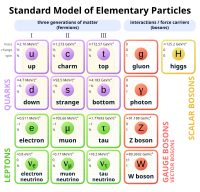
Formulation of the Lagrangian particle model LAPMOD and its evaluation against Kincaid SF6 and SO2 datasets
Sign Up to like & getrecommendations! Published in 2017 at "Atmospheric Environment"
DOI: 10.1016/j.atmosenv.2017.05.039
Abstract: Abstract This paper presents the Lagrangian particle model LAPMOD for modeling time-variable emissions in atmosphere of inert and radioactive gases and aerosols. LAPMOD is fully interfaced with the meteorological model CALMET (Scire et al., 1999a), part… read more here.
Keywords: lagrangian particle; particle model; model; evaluation ... See more keywords

Validation of a Lagrangian particle dispersion model with wind tunnel and field experiments in urban environment
Sign Up to like & getrecommendations! Published in 2018 at "Atmospheric Environment"
DOI: 10.1016/j.atmosenv.2018.08.045
Abstract: Abstract Unexpected releases of hazardous airborne materials may happen in various circumstances, more frequently in accidental situations, less usually due to malicious activities. In all cases, the risk for the population and the rescue team… read more here.
Keywords: lagrangian particle; dispersion model; particle dispersion; model ... See more keywords

Numerical investigation of pollution transport and environmental improvement measures in a tidal bay based on a Lagrangian particle-tracking model
Sign Up to like & getrecommendations! Published in 2018 at "Water science and engineering"
DOI: 10.1016/j.wse.2017.08.001
Abstract: Abstract In view of the severity of oceanic pollution, based on the finite volume coastal ocean model (FVCOM), a Lagrangian particle-tracking model was used to numerically investigate the coastal pollution transport and water exchange capability… read more here.
Keywords: pollution; bay; lagrangian particle; model ... See more keywords

Source–receptor matrix calculation for deposited mass with the Lagrangian particle dispersion model FLEXPART v10.2 in backward mode
Sign Up to like & getrecommendations! Published in 2017 at "Geoscientific Model Development"
DOI: 10.5194/gmd-10-4605-2017
Abstract: Abstract. Existing Lagrangian particle dispersion models are capable of establishing source–receptor relationships by running either forward or backward in time. For receptor-oriented studies such as interpretation of "point" measurement data, backward simulations can be computationally… read more here.
Keywords: lagrangian particle; source receptor; particle dispersion;